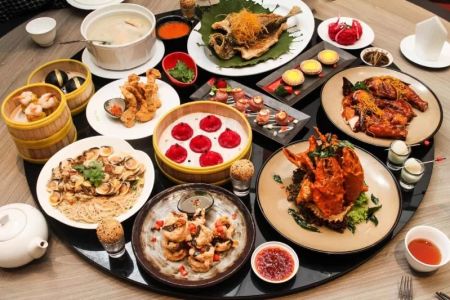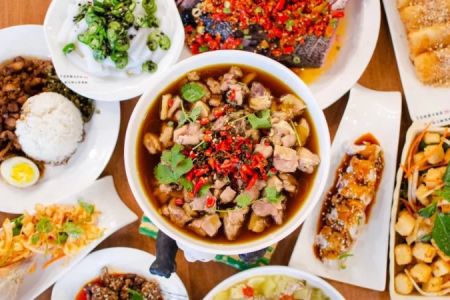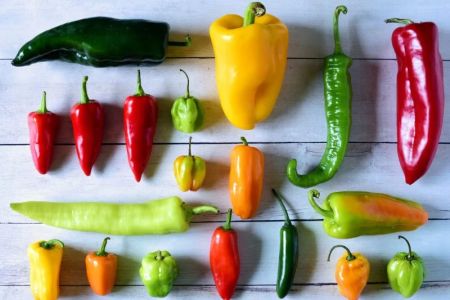Exploring the Delicacies of Chinese Seafood Hot Pot: Fresh Ingredients and Rich Broths
- 1. What Is Chinese Seafood Hot Pot?
- 2. Key Ingredients for the Perfect Seafood Hot Pot
- 3. Choosing the Right Broth for Seafood Hot Pot
- 4. Cooking Techniques to Enhance Your Seafood Hot Pot
- 5. Real-Life Story: A Memorable Seafood Hot Pot Experience
1. What Is Chinese Seafood Hot Pot?
Chinese seafood hot pot is a beloved culinary tradition that brings together fresh seafood, vibrant vegetables, and aromatic broths into a communal dining experience. The concept of hot pot, or "huo guo," has been around for centuries in China, but the seafood variation stands out for its delicate flavors and health benefits. Essentially, diners dip raw ingredients into simmering broths, allowing them to cook quickly at the table. The result is a flavorful and interactive meal that is perfect for sharing with friends and family.
The Origins of Hot Pot
While hot pot originated in China over 1,000 years ago, the seafood variety developed in coastal regions where fresh seafood was abundant. The unique combination of local seafood with aromatic broths has become a staple in many Chinese households and restaurants, especially in cities like Guangzhou and Shanghai, where seafood is particularly prominent in the cuisine.
2. Key Ingredients for the Perfect Seafood Hot Pot
The secret to a delicious seafood hot pot lies in the quality and variety of ingredients you use. The best hot pot experiences start with fresh seafood and carefully chosen vegetables, all of which cook in the hot broth to create an irresistible meal. Here are the key ingredients to include in your seafood hot pot:
1. Fresh Seafood
Freshness is essential when it comes to seafood hot pot. Common choices include shrimp, scallops, crab, clams, and fish such as cod or snapper. The seafood should be fresh and tender, as it cooks quickly in the hot broth, preserving its natural flavors and textures. It’s important to select seafood that can hold up to the cooking process without becoming overcooked or rubbery.
2. Vegetables
In addition to seafood, a variety of vegetables add both flavor and texture to the hot pot. Common vegetables include bok choy, napa cabbage, mushrooms, lotus root, and tofu. These vegetables not only add essential nutrients but also absorb the savory broth, enhancing the overall taste of the dish.
3. Noodles and Rice
To complete your seafood hot pot, add some noodles or rice to soak up the flavorful broth. Glass noodles or thin wheat noodles are commonly used, but you can also opt for vermicelli or even rice cakes. These ingredients add substance to the dish, making it more filling and satisfying.
3. Choosing the Right Broth for Seafood Hot Pot
The broth is the soul of any hot pot. It’s the foundation of the flavor and aroma that infuse all the ingredients as they cook. When making a seafood hot pot, it’s important to choose a broth that complements the delicate flavors of the seafood without overpowering them. Here are some popular broth options:
1. Clear Broth
A clear broth is light, fragrant, and allows the natural flavors of the seafood and vegetables to shine through. Often made with chicken stock, fish stock, or a simple vegetable base, clear broth is a versatile choice for those who prefer a more subtle flavor profile.
2. Spicy Sichuan Broth
If you like heat, a spicy Sichuan-style broth is an exciting choice. Made with chili peppers, garlic, and Sichuan peppercorns, this broth adds a bold, fiery kick to your seafood hot pot. The numbing sensation from the Sichuan peppercorns creates a unique flavor experience that’s perfect for those who love spicy food.
3. Coconut Broth
A coconut-based broth is perfect for a rich, creamy texture that pairs well with seafood. This type of broth combines the natural sweetness of coconut milk with spices like lemongrass and ginger, making it a flavorful and fragrant option for your hot pot. It’s especially popular in coastal regions and Southeast Asian-inspired seafood hot pots.
4. Cooking Techniques to Enhance Your Seafood Hot Pot
To get the most out of your seafood hot pot, there are a few cooking techniques to keep in mind. Here are some helpful tips to ensure your hot pot is both delicious and enjoyable:
1. Don’t Overcook the Seafood
Seafood cooks quickly in the hot broth, and overcooking can result in rubbery textures and a loss of natural flavor. Be mindful of cooking times—shrimp usually takes about 1-2 minutes, fish fillets may need 3-4 minutes, and shellfish takes about 3-5 minutes, depending on size.
2. Add Ingredients in Stages
To ensure everything cooks evenly, add the ingredients in stages. Start with the items that take the longest to cook, such as root vegetables or tofu, and then gradually add the seafood and delicate vegetables. This will allow each ingredient to cook to perfection without being overcooked or undercooked.
3. Stir Gently
While it’s tempting to stir the ingredients in the hot pot vigorously, gentle stirring helps prevent delicate seafood from breaking apart. Use a slotted spoon or chopsticks to gently move the ingredients around, allowing the broth to infuse all the flavors without disturbing the seafood.
5. Real-Life Story: A Memorable Seafood Hot Pot Experience
During a recent trip to a traditional hot pot restaurant in Shanghai, I had the chance to experience the best seafood hot pot of my life. The clear broth was infused with subtle flavors of seaweed and ginger, which perfectly complemented the fresh fish and shrimp we added. What stood out most was the camaraderie as we sat around the table, dipping seafood and vegetables into the simmering broth, savoring every bite while chatting and laughing. The experience wasn’t just about the food—it was about sharing a meal with friends and creating lasting memories over a hot pot of fresh, flavorful seafood.
If you’re looking to replicate this experience at home, I highly recommend using the freshest ingredients you can find and choosing a broth that enhances, rather than overpowers, the delicate flavors of the seafood. And of course, don’t forget to enjoy the experience with good company!







